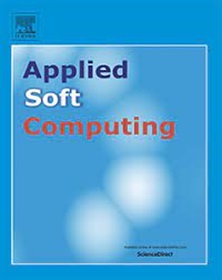在p,q-拟秩正形模糊集下,基于Frank算子的功率聚合算子MADM模型用于战机降落道路选择
IF 6.6
1区 计算机科学
Q1 COMPUTER SCIENCE, ARTIFICIAL INTELLIGENCE
引用次数: 0
摘要
在军事后勤和作战规划中,选择最优的军用飞机起降公路是一项关键的战略决策。这个过程涉及几个直接影响任务成功、操作安全和公共安全的关键因素。其中最重要的属性是高速公路的直长延伸,有足够的宽度来容纳战机降落距离,以及它的表面状况,必须没有障碍物,碎片和损坏。低交通密度对于避免着陆时的碰撞风险至关重要。此外,有利的天气条件、靠近军营、提供紧急服务和燃料以及周围安全和无危险的地形对于安全有效的行动至关重要。这些因素共同构成了为军事空中行动选择高速公路的可靠和战术方法的支柱。因此,为了对各种飞机起降方案进行评估和排序,需要一个强有力的、值得信赖的决策程序。本实验旨在构建多属性决策环境下的综合结构,利用建议的p,q-拟环正形模糊弗兰克功率平均和p,q-拟环正形模糊弗兰克功率几何算子捕捉公路选择中的模糊性和不确定性。在此基础上,实现了p,q-拟环正交模糊Frank幂加权聚合,并与p,q-拟环正交模糊Frank幂加权几何算子对距离和相似测度进行积分。最后进行了灵敏度分析,并与现有方法进行了比较,进一步证明了所提方法的优越性和有效性。本文章由计算机程序翻译,如有差异,请以英文原文为准。
An MADM model using Frank operations based power aggregation operator under p,q-quasirung orthopair fuzzy sets for highway selection in war-plane landing
In military logistics and operational planning, selecting an optimal highway for war-plane landings and take-offs is a critical and strategic decision. This process involves several key factors that directly affect mission success, operational safety, and public security. Among the most important attributes are the highway’s straight and long stretch with sufficient width to accommodate war-plane landing distances, and its surface condition, which must be free from obstacles, debris, and damage. Low traffic density is crucial to avoid the risk of collisions during landing. Additionally, favourable weather conditions, proximity to military camps, availability of emergency services and fuel, and a secure and hazard-free surrounding terrain are essential for safe and efficient operations. These factors collectively form the backbone of a reliable and tactical approach to highway selection for military air operations. Thus, in order to assess and rank various options for the landing and take-off of war planes, a strong and trustworthy procedure for making decisions is required. The purpose of this experiment is to build a comprehensive structure in multi-attribute decision making environment, using suggested -quasirung orthopair fuzzy Frank power averaging as well as -quasirung orthopair fuzzy Frank power geometric operators to capture ambiguity and uncertainty in highway selection. Furthermore, -quasirung orthopair fuzzy Frank power weighted aggregation along with -quasirung orthopair fuzzy Frank power weighted geometric operators are implemented for integrating the distance as well as similarity measures. Finally, sensitivity analysis and a comparison with the present technique are included to further demonstrate the superiority and validity of the technique that is suggested.
求助全文
通过发布文献求助,成功后即可免费获取论文全文。
去求助
来源期刊

Applied Soft Computing
工程技术-计算机:跨学科应用
CiteScore
15.80
自引率
6.90%
发文量
874
审稿时长
10.9 months
期刊介绍:
Applied Soft Computing is an international journal promoting an integrated view of soft computing to solve real life problems.The focus is to publish the highest quality research in application and convergence of the areas of Fuzzy Logic, Neural Networks, Evolutionary Computing, Rough Sets and other similar techniques to address real world complexities.
Applied Soft Computing is a rolling publication: articles are published as soon as the editor-in-chief has accepted them. Therefore, the web site will continuously be updated with new articles and the publication time will be short.
 求助内容:
求助内容: 应助结果提醒方式:
应助结果提醒方式:


